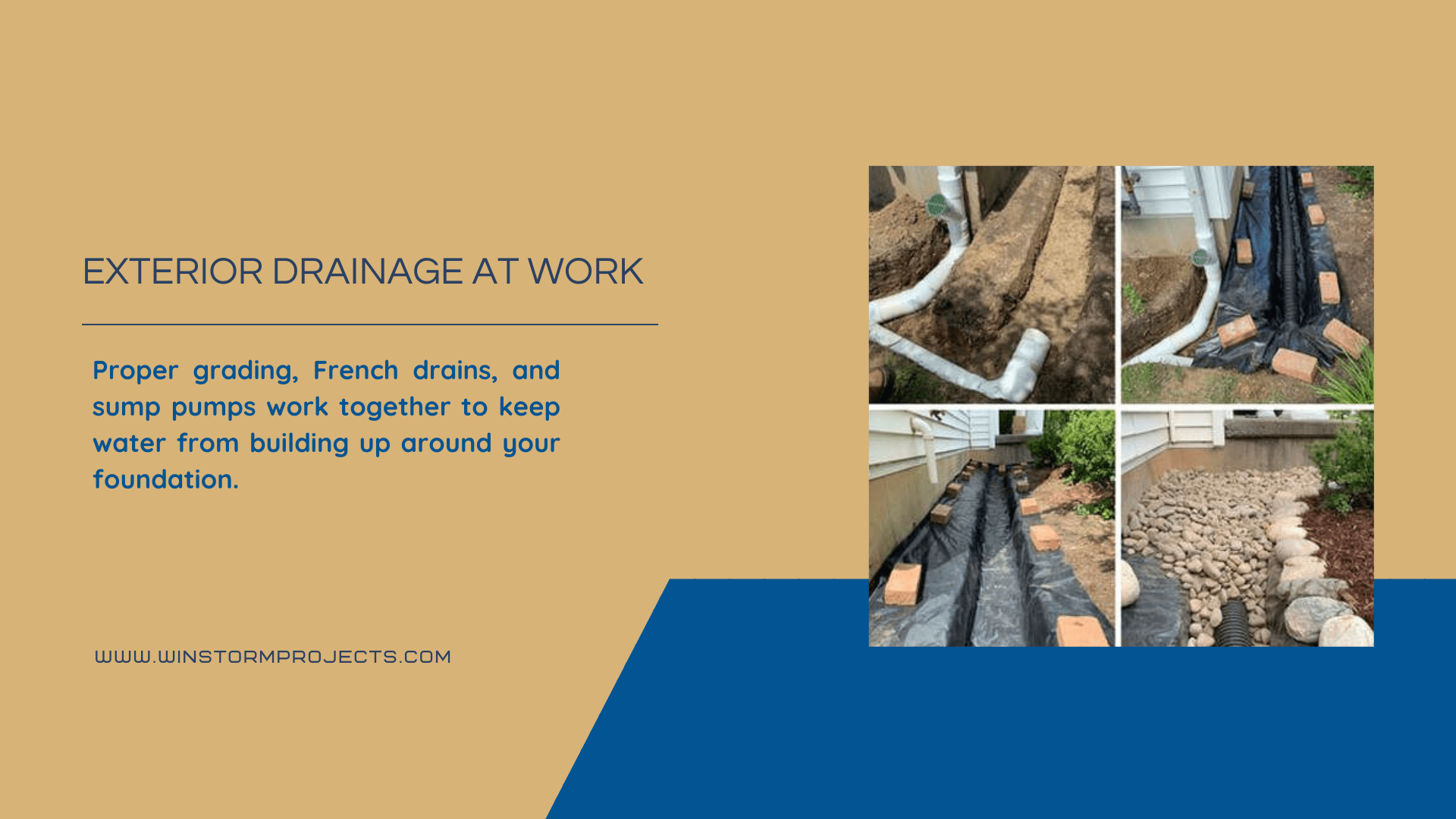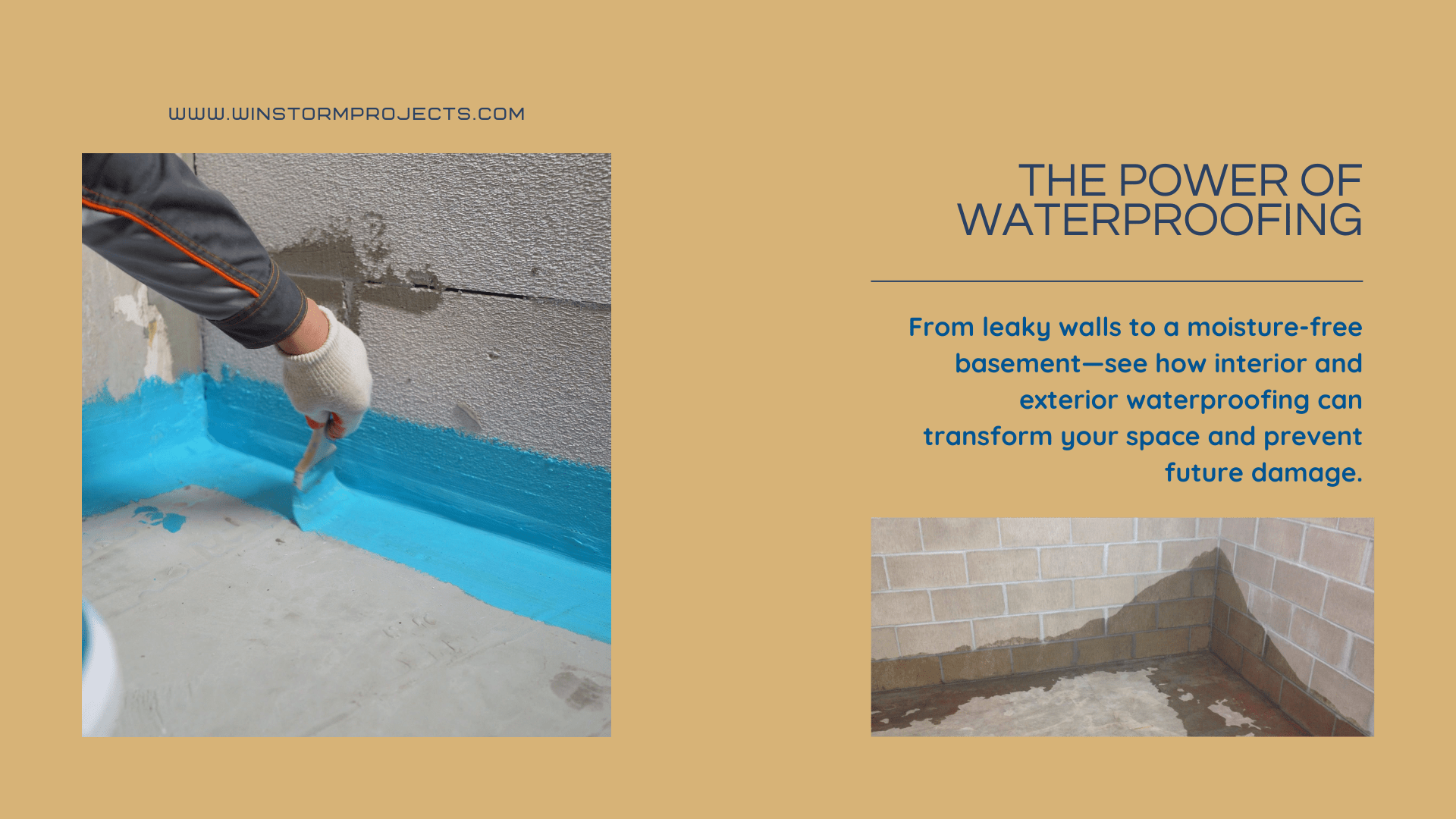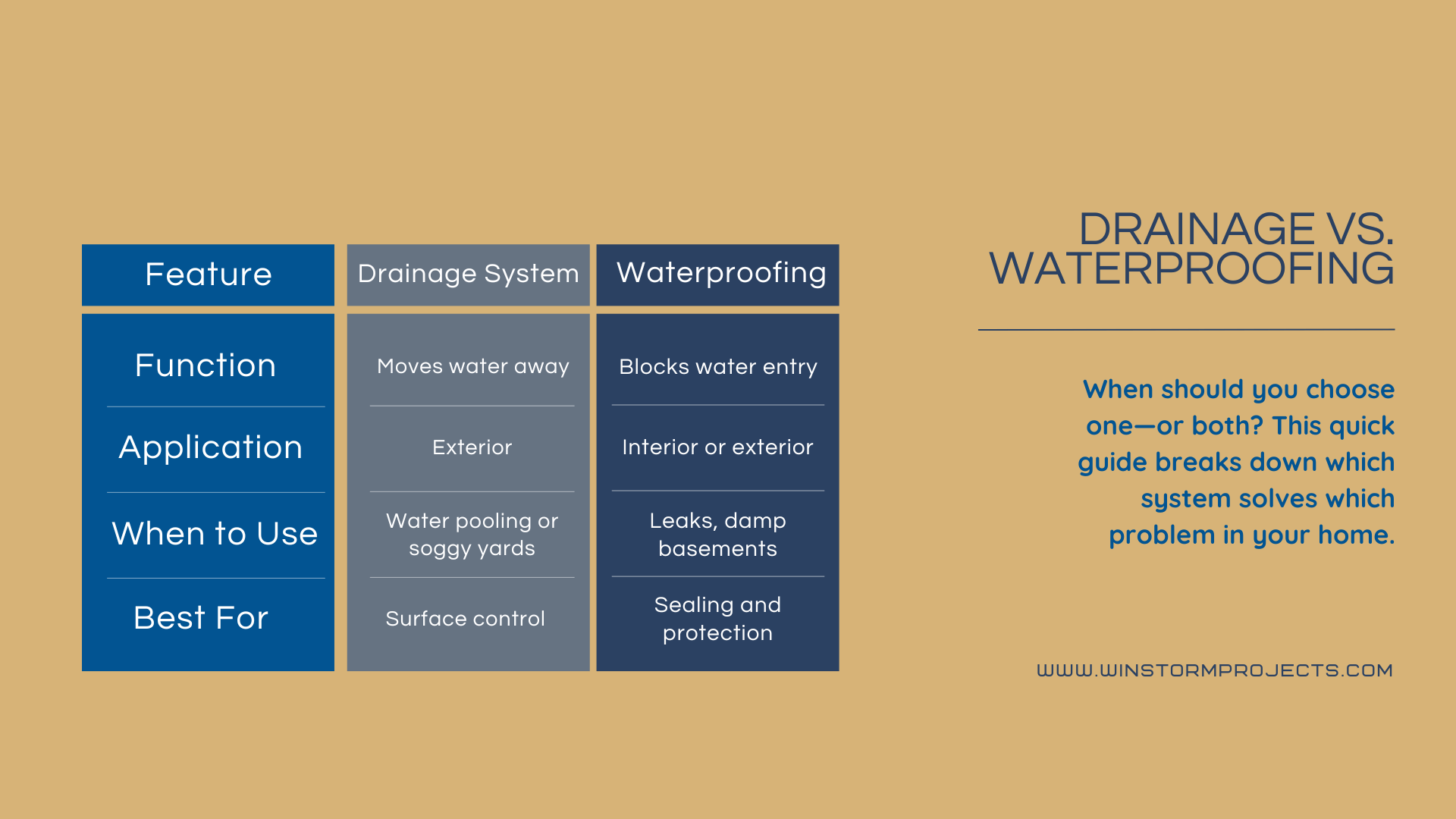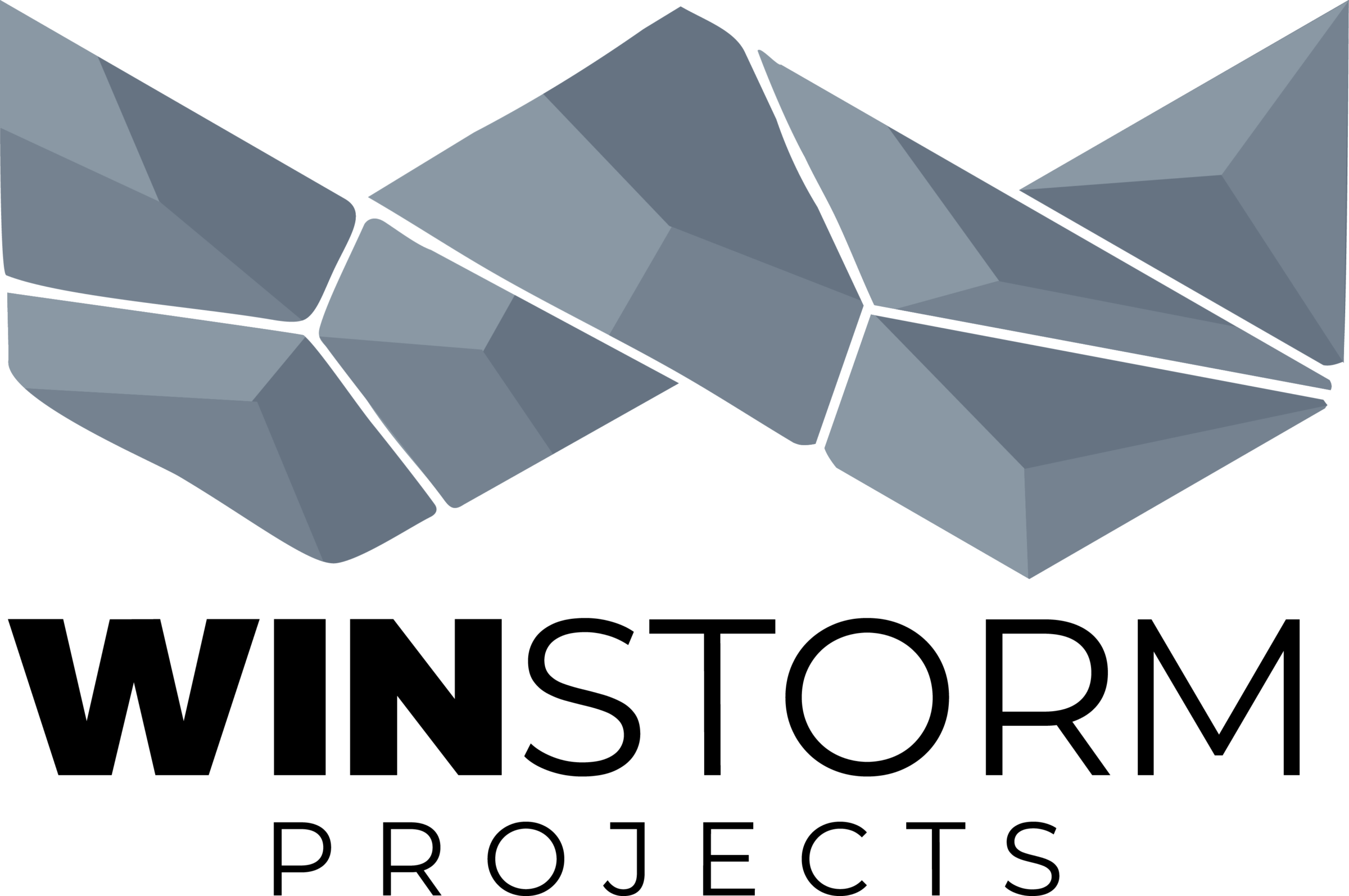When it comes to protecting your basement and home from water damage, knowing the difference between drainage vs waterproofing methods, is essential. Both approaches play important roles in keeping your property dry, but they serve different purposes.
Drainage systems work by redirecting water away from your home—especially helpful in areas with heavy rainfall or clay-heavy soils. In contrast, basement waterproofing is all about creating a barrier to block water from entering through basement walls, foundations, and floors.
For homeowners in Ontario, understanding when to use a drainage solution and when to invest in exterior or interior basement waterproofing can prevent expensive repairs and moisture-related issues. Let’s explore the key differences between these two protective strategies and when to use each one.
What Is Exterior Drainage?

Exterior drainage systems are designed to manage water around the perimeter of your home. These systems are particularly effective in preventing basement water problems by directing water away before it can seep into your foundation.
Common types of drainage systems include:
- Grading: Adjusting your landscaping to slope away from the house.
- French drains: Subsurface pipes that collect and redirect water away from the foundation wall.
- Yard drainage systems: Surface solutions like swales or dry wells.
- Sump pumps: Installed in basements to pump out water that enters through the ground.
In places like Guelph, where clay soil can trap moisture, proper drainage installation is essential to keep your basement dry.
What Is Basement Waterproofing?

Basement waterproofing involves sealing your basement walls and floor to prevent water from entering. It’s especially important for homes that experience high hydrostatic pressure or frequent leaks.
There are two main types:
- Exterior basement waterproofing: Involves excavation around the home to apply a waterproof membrane on the outside of the foundation wall.
- Interior waterproofing: Involves applying sealants, coatings, or installing drainage channels on the inside of the basement.
Signs You May Need Basement Waterproofing:
- Damp or musty smells
- Visible leaks or water stains
- Mould growth
- Cracks in the basement floor or walls
We offer custom-built basement waterproofing systems tailored to the unique conditions of Ontario homes.
Why Good Drainage Is So Important
A quality drainage system is your first line of defence against water pooling around your home. Proper surface drainage and subsurface solutions can reduce the risk of foundation damage and interior flooding.
Benefits of Drainage Systems:
- Reduces water pooling andprevents flooding near the foundation wall
- Protects the structural integrity of your home
- Enhances landscaping and lawn health
- Helps maintain a dry, functional basement
Advanced Drainage Technology: DryTrak System
Our modern basement drainage system, DryTrak, is a smart alternative to traditional gravel-and-pipe methods. Unlike older systems that clog easily—especially in clay-rich soils—DryTrak installs above the floor slab and channels water efficiently to a sump pump or drainage outlet.
Key Benefits of DryTrak:
- Efficient water removal before it reaches your basement floor
- Durability through Ontario’s harsh freeze-thaw cycles
- Pairs well with both interior waterproofing and exterior waterproofing techniques
The Importance of Waterproofing
While drainage keeps water away, waterproofing keeps it out. Basement waterproofing protects your home’s structure, air quality, and long-term value.
Advantages of Waterproofing:
- Prevents moisture from penetrating basement walls
- Improves indoor air quality by reducing mould and mildew
- Increases home resale value
- Enhances energy efficiency by preventing heat loss through damp surfaces
Common Waterproofing Methods
There’s no one-size-fits-all waterproofing method. Here’s a breakdown of the most popular approaches:
- Exterior waterproofing: Involves excavation and applying a waterproof membrane to the outer foundation.
- Interior basement waterproofing: Applies sealants or drainage channels inside to handle leaks.
- Liquid waterproofing: Spray- or brush-applied for even coverage on surfaces.
- Cementitious waterproofing: Uses a cement-based coating, ideal for basement walls and floors.
- Chemical injections: Used to seal cracks and prevent moisture in porous materials.
Comparing Drainage vs Waterproofing: Which Do You Need?
Both drainage systems and basement waterproofing methods aim to protect your home from water damage, but they work in different ways

Most Ontario homes benefit from a combined approach, especially in areas with poor soil drainage or high groundwater levels.
Final Thoughts for Every Homeowner
Whether you’re battling surface water or a leaky foundation, a smart mix of drainage and basement waterproofing is the best way to protect your investment.
Modern solutions like DryTrak offer integrated protection, helping you avoid costly damage and enjoy a healthier, drier home. As every homeowner knows, water problems don’t fix themselves—so don’t wait for that next big storm to act.
Frequently Asked Questions
What is the difference between drainage and waterproofing?
Drainage manages surface and subsurface water by moving it away from the home. Waterproofing seals thebasement walls and floor to stop moisture from getting in. Both work together to protect your home.
Why is drainage important for Ontario homeowners?
In regions like Guelph with clay-heavy soil, drainage helps prevent water buildup, keeps your landscaping healthy, and protects your home’s foundation.
How does basement waterproofing work?
It uses sealants, membranes, or drainage systems to block or redirect water before it enters the basement.
How can I tell if I need waterproofing?
Look for signs like damp smells, mould, water stains, or visible leaks in the basement.
What makes the DryTrak system unique?
DryTrak sits above the slab, reducing clog risk and working well with both interior waterproofing and drainage systems.
Do I need both drainage and waterproofing?
In most cases, yes. Installing both systems offers the best protection—interior or exterior, depending on your specific needs.
What are the benefits of waterproofing my basement?
It prevents damage, improves air quality, increases property value, and supports better energy efficiency.
Can I integrate drainage with waterproofing?
Absolutely. A coordinatedinterior and exterior waterproofing strategy that includes a drain system and sump pump is the most effective way to manage water around your home.

